
The red underwing is a moth of the family Erebidae. The species was first described by Carl Linnaeus in his 1767 12th edition of Systema Naturae.
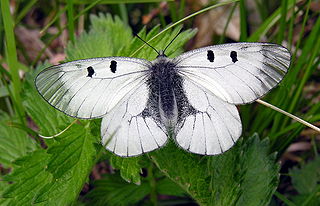
The clouded Apollo is a butterfly species of the family of swallowtail butterflies (Papilionidae) found in the Palearctic realm.

The six-spot burnet is a day-flying moth of the family Zygaenidae.

The purple-shot copper is a butterfly in the family of the Lycaenidae or copper butterflies and in the genus of the Lycaena.

Orgyia antiqua, the rusty tussock moth or vapourer, is a moth in the family Erebidae.

Colias is a genus of butterflies in the family Pieridae. They are often called clouded yellows; the North American name "sulphurs" is elsewhere used for Coliadinae in general. The closest living relative is the genus Zerene, which is sometimes included in Colias.

The purple-edged copper is a butterfly of the family Lycaenidae.
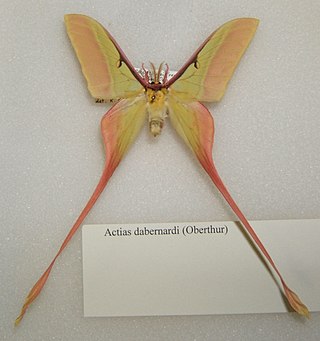
Actias dubernardi, the Chinese moon moth, is a moth of the family Saturniidae. The species was first described by Charles Oberthür in 1897.

Cerura vinula, the puss moth, is a lepidopteran from the family Notodontidae. The species was first described by Carl Linnaeus in his 1758 10th edition of Systema Naturae.

Zerynthia polyxena, the southern festoon, is a butterfly belonging to the butterfly family Papilionidae.

Zygaena carniolica, sometimes described as the crepuscular burnet or eastern burnet, is a member of the family Zygaenidae.

Agrochola lota, the red-line Quaker, is a moth of the family Noctuidae. The species was first described by Carl Alexander Clerck in 1759. It is distributed throughout the whole of Europe except Scandinavia; in Armenia, Asia Minor, and east across the Palearctic to the Altai mountains and western Siberia.It was introduced to Newfoundland. In the Alps, it rises at altitudes of just over 1500 metres.

Archips xylosteana, the variegated golden tortrix or brown oak tortrix, is a moth of the family Tortricidae.
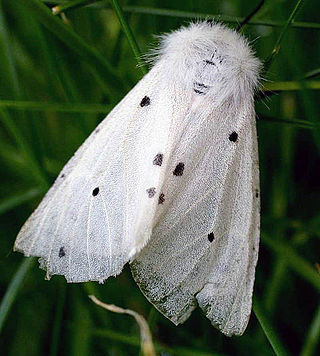
Diaphora mendica, the muslin moth, is a moth of the family Erebidae. It is found in the Palearctic realm east to Lake Baikal.
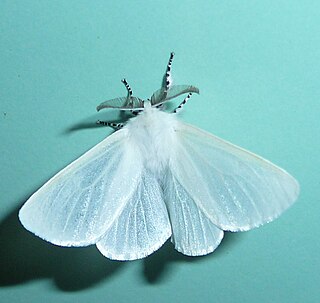
Leucoma salicis, the white satin moth or satin moth, is a moth of the family Erebidae. The species was first described by Carl Linnaeus in his 1758 10th edition of Systema Naturae. It is found in Europe including the British Isles but not the far north. In the east it is found across the Palearctic to Japan. Also in North America where it was introduced in the 1920s.
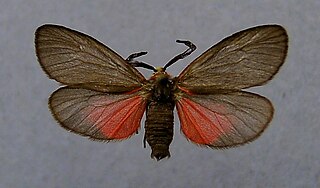
Aglaope infausta, or almond-tree leaf skeletonizer moth, is a moth of the family Zygaenidae.

Zygaena lonicerae, the narrow-bordered five-spot burnet, is a moth of the family Zygaenidae. The species was first described by Theodor Gottlieb von Scheven in 1777.

Zygaena hilaris is a species of moth in the family Zygaenidae.
Cymbalophora rivularis is a moth of the family Erebidae first described by Édouard Ménétries in 1832. It is found in central Italy, the Balkan Peninsula, western Iran, Dagestan, Armenia and western Azerbaijan.
Laelia suffusa is a moth of the family Erebidae first described by George Hampson in 1893. It is found in Bangladesh, Sri Lanka, Java, East Indies, Sundaland, the Philippines and Sulawesi.



















